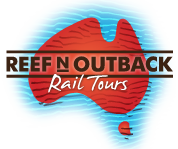Northern Territory
The Northern Territory is Australia’s real Outback and home to the iconic natural wonders of Kakadu National Park and Uluru (Ayers Rock). It encapsulates a total area of 1.35 million square kilometres and accounts for 20% of the whole country. However, just 182,000 or 1% of Australia’s population lives here. Aboriginal people hold a deep spiritual connection to this land; their 40,000 year old story is shared on rocks and canvas, discovered in the sand and passed down through generations. The Northern Territory is blessed with diverse and contrasting environments, where change is the only constant. Intriguing and spectacular wildlife vary dramatically from the deserts of Red Centre to the tropics of the Top End. The “NT” is renowned for its colourful outback characters.
Alice Springs
In the heart of Central Australia, between the East and West MacDonnell Ranges, sits Australia’s most famous outback town. It’s where the Arrernte Aboriginal tribal group have lived for 20,000 years and where pioneer men and women gave “tough” a new meaning. It’s where they race camels, hold hilarious holiday regattas in dry river beds and where Peter Finch finally caught up with Virginia McKenna in the 1956 film classic “A Town Like Alice”.
MacDonnell Ranges
The East and West MacDonnell Ranges stretch out for hundreds of kilometres on both sides of Alice Springs. The panoramic landscapes of the West MacDonnell Ranges are easily accessed from Alice Springs.
Uluru (Ayers Rock)
Rising from the broad desert plain in the deep centre of Australia, Uluru (Ayers Rock) is Australia’s most recognisable natural icon. The famous sandstone monolith stands 348 metres high and, like an iceberg, has most of its bulk below the surface. Uluru-Kata Tjuta National Park is a world-class visitor destination and a key part of Australia’s iconic Red Centre. This living cultural landscape is the physical and metaphoric heart of Australia, and was one of the first areas to be identified as a National Landscape.
Kata-Tjuta (The Olgas)
Kata Tjuta (otherwise known as the Olgas) are set within the Uluru-Kata Tjuta National Park. The name has been aptly given to the Olgas as Kata Tjuta actually means ‘many heads’ in traditional Aboriginal language. The Olgas are about 30km from Uluru and is made up of 36 rounded domes with the tallest (Mt. Olga) being 200m higher than Uluru (that’s 546m).
Katherine
The Katherine Region stretches from Dunmarra in the south, to the Daly River region in the north. From east to west, it embraces both the Queensland and Western Australian borders and in total covers around 480,000 sq km. Known by the aboriginal name Nitmiluk, a cruise through Katherine Gorge is just amazing. The Gorge is located in Nitmiluk National Park and is one of the most spectacular areas in the country, winding 12 km with walls more than 70m high. The 13 wonderful gorges of Nitmiluk National Park began 23 million years ago as torrents of water pouring along tiny cracks in the earth.
Kakadu
World Heritage listed Kakadu National Park is Australia’s largest. Almost 20,000 square kilometres in size the park is almost three hours drive east from Darwin. The name ‘Kakadu’ comes from an Aboriginal floodplain language called Gagudju which was one of the languages spoken in the north of the park at the beginning of the twentieth century. Although languages such as Gagudju and Limilngan are no longer regularly spoken, descendants of these language groups are still living in Kakadu. Aboriginal languages used in the Park today include Kunwinjku from the north-eastern region, Gun-djeihmi from the central region and Jawoyn from the southern region.
Darwin
Australia’s proximity to Asia is never more apparent than when you are in cosmopolitan Darwin. The northernmost capital, named after Charles Darwin, is an exotic blend of frontier town, Asian village, and modern life.
For more information on the Northern Territory visit Northern Territory Tourism



Follow Us